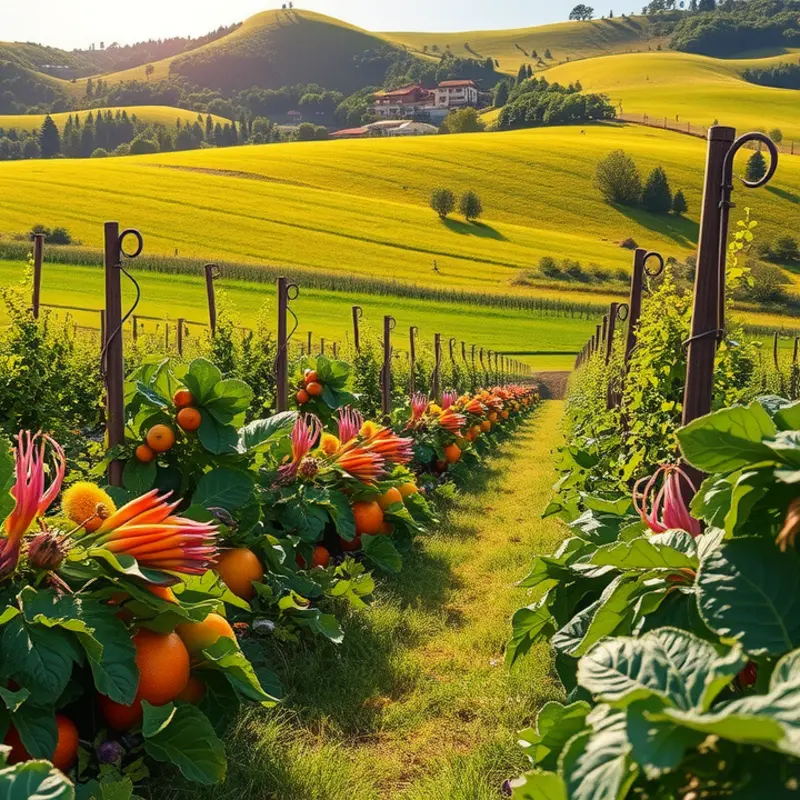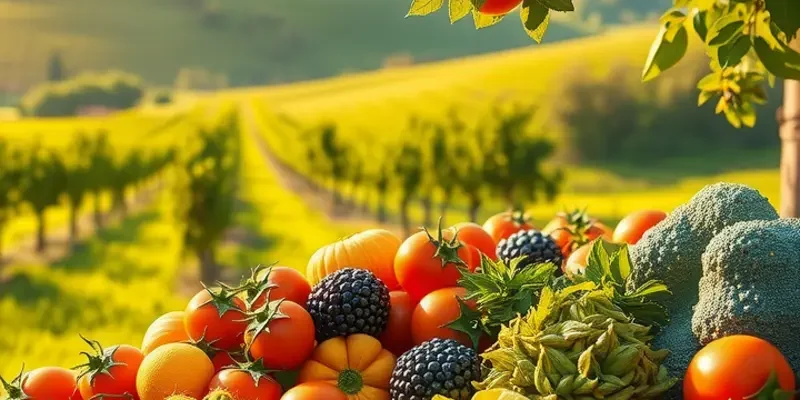Quick pickling is a delightful and accessible way to enhance your meals, adding tangy flavors and crunch to everyday dishes. Whether you’re a novice or an experienced home cook, this method requires minimal ingredients and equipment, making it perfect for everyone. By understanding just a few basic techniques, you can enjoy homemade pickles that elevate salads, sandwiches, and snacks. Let’s dive into the world of quick pickling and unlock the vibrant flavors waiting to be captured in your kitchen.
Understanding Quick Pickling Basics

Quick pickling is an art that transforms simple ingredients into vibrant, flavorful accompaniments. This process does not rely on lengthy fermentation, allowing you to enjoy your pickles just hours after preparation. Mastering quick pickling at home involves understanding the core ingredients and methods that bring out those quintessential tangy flavors.
To start, focus on the essential elements: vinegar, water, salt, and sugar. These components form the base of your pickling brine. Vinegar provides acidity and flavor; white vinegar, apple cider, or rice vinegar are popular choices. Although the type of vinegar affects the taste, ensure it has at least 5% acidity to pasteurize the pickles effectively. Mixing equal parts water and vinegar creates a balanced brine that is neither too sharp nor too diluted. Salt plays both a flavoring and preserving role. Opt for pickling or kosher salt, as iodized salt may alter the brine’s clarity. Sugar adds sweetness and offsets vinegar’s intensity, but adjust according to your preferences.
Next, consider your choice of vegetables. While cucumbers and onions are classic, many other vegetables thrive in a briny bath. Carrots, radishes, and green beans are excellent for their texture and ability to absorb flavors quickly. For those seeking a bold crunch, try cauliflower or jalapeños, adding color and spice. Remember to slice your vegetables evenly to ensure they all soak up the same amount of brine.
Adding aromatics is where your creativity shines. Garlic, mustard seeds, and peppercorns are staple additions that infuse your pickles with depth. Fresh herbs like dill or rosemary heighten the flavor profile, while spices such as cloves or coriander offer warm undertones. Experiment with combinations to craft a unique taste experience.
There are a few quick pickling methods to explore, each with its own advantages. Refrigerator pickling involves pouring hot brine over packed jars of vegetables, cooling them, then refrigerating. For immediate consumption, consider the blanching method, where vegetables are briefly boiled before being submerged in the brine, which enhances their ability to absorb flavors swiftly.
Achieving optimal results requires attention to detail. Sterilize your jars to prevent contamination and cut your vegetables to similar sizes for even pickling. Adjust the spice levels according to personal taste; start with subtle flavors, then build complexity as you gain confidence.
Connecting this technique to wider culinary practices, you might find it advantageous to incorporate pickled components into low-waste cooking. Explore low-waste cooking prep for insights on how to optimize your kitchen resources.
With practice, quick pickling becomes a seamless part of meal preparation, adding brightness and zest to meals year-round. Dive into this flavorful endeavor, and before long, creating your own signature pickling blends will become second nature.
Quick Pickling Recipes to Try

Put your newfound knowledge into action using these simple quick pickling recipes. Start with the classics and gradually explore more adventurous combinations to transform your culinary repertoire.
Pickled Cucumbers
To make classic pickled cucumbers, slice two medium-sized cucumbers into 1/4-inch rounds. Combine one cup of vinegar, a cup of water, two tablespoons of sugar, and a tablespoon of salt in a saucepan. Bring the mixture to a simmer, stirring until the sugar and salt dissolve. Pour the hot brine over the cucumbers, ensuring they’re completely submerged. Let them cool, then refrigerate for at least one hour before serving. Store them in an airtight container for up to two weeks.
Pickled Onions
For a tangy, crisp side, thinly slice a large red onion. In a bowl, whisk together a cup of vinegar, half a cup of water, a tablespoon of sugar, and a pinch of salt. Soak the onions in this mixture for at least 30 minutes. The vibrant color deepens as they marinate. Keep them in the refrigerator for approximately a week, perfect as a topping on salads or sandwiches.
Spicy Pickled Carrots
To amp up the heat, cut three peeled carrots into sticks. In a small pot, mix one cup of vinegar, half a cup of water, a tablespoon of sugar, a teaspoon of salt, and a few chili flakes. Heat until the sugar dissolves. Pour the hot brine over the carrot sticks and let them sit at room temperature for an hour before refrigerating. These slightly spicy treats can last up to three weeks when refrigerated.
Pickled Radishes
For an adventurous twist, thinly slice a bunch of radishes. In a jar, place a few whole black peppercorns and a bay leaf. For the brine, boil a cup of white vinegar and a cup of water with two tablespoons of sugar and a tablespoon of salt. Pour the hot mixture over the radishes. Allow the jar to cool at room temperature before sealing it. The pickled radishes develop their flavor after a day and can be kept refrigerated for up to a week.
Experiment with different herbs and spices to tailor each recipe to your taste. Dill, thyme, or even garlic can add delightful nuances. For more ideas on enhancing flavors without adding excess salt, consider visiting this guide on flavor boosters.
Remember, the key to successful quick pickling is maintaining the crispness of your vegetables. Ensure they’re fresh and avoid overcrowding them in containers. By doing so, you maintain quality while exploring these vibrant, tangy flavors that will enhance your culinary creations.
Final words
Quick pickling is not just a preservation method; it’s an opportunity to enhance your cooking with flavor and creativity. By taking the time to learn about the basic principles and experimenting with different recipes, you can make vibrant, tangy pickles that complement a wide variety of dishes. As you grow more comfortable with the process, feel free to customize recipes to suit your palate. Remember that the joy of quick pickling lies in the ability to infuse your meals with freshness, while also savoring the satisfaction of creating something with your own hands. Get started today, and embrace this flavorful addition to your kitchen repertoire!







